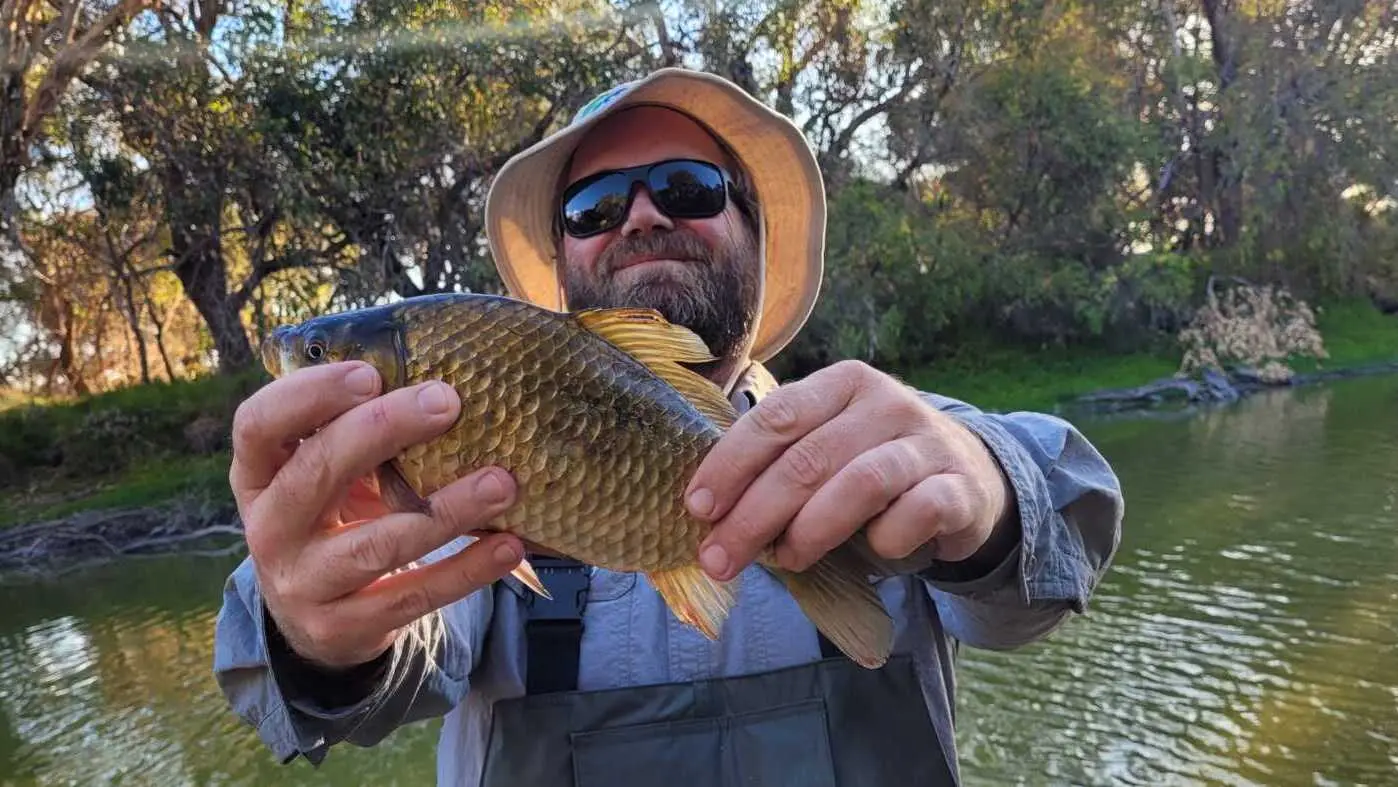Improve water quality
Remove invasive species
Build community capacity
Booming goldfish
Busselton may be famous for its fishing, but did you know that it is also home to some of the biggest, meanest feral goldfish in the world? Feral goldfish of over 40cm and weighing up to 2kg have been recorded in the Lower Vasse River and since the last removal program in 2013 the population is booming.


Damage to the river
Invasive species such as goldfish degrade natural ecosystems and do not belong in our waterways. Feral goldfish prey on native fish species and compete with them for resources, they also contribute to poor water quality by stirring up excess nutrients in sediments.
The high population of feral goldfish in the Lower Vasse has a serious impact on the immediate ecosystem but also on the Ramsar-listed Vasse Wonnerup wetlands further downstream, there is a serious risk of invasive fish spreading to other local tributaries which feed into the wetland.
Action on invasives
OzFish Geographe is using an innovative method to remove goldfish from the river with pod traps. These baited, pyramidal traps are used to minimize bycatch and disturbance to native species.

LATEST NEWS
18 APRIL 2024 | Striking gold in the Vasse River to remove feral fish
Volunteers from Australia’s fishing conservation charity OzFish have begun a restoration project to remove feral goldfish from the Vasse River. The initiative, spearheaded by the OzFish Geographe Chapter, will utilise innovative techniques, including the use of pod traps, to safely capture and remove these invasive fish while minimising disruption to native species. While these familiar pets may seem harmless in indoor tanks, when released into the wild, they can wreak havoc on

24 APRIL 2024 | OzFish Volunteers trap dumped pet goldfish from Vasse River amid concerns about water quality
The warm, murky conditions of the river flowing through a popular WA tourist town have made it a “paradise” for some of the world’s largest feral goldfish. Now, volunteers in Busselton are trapping and removing the dumped pets and their ancestors one by one to try and get the problem under control.It was only in recent decades that researchers started pulling up






